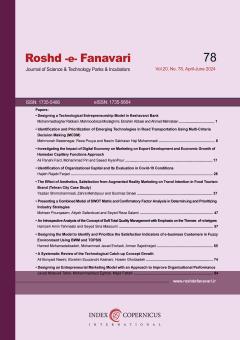Designing the Model to Identify and Prioritize the Satisfaction Indicators of e-business Customers in Fuzzy Environment Using BWM and TOPSIS
Subject Areas : Development of business models in small and medium enterprises
Hamed Mohamadalizadeh
1
,
Mohammad Javad Ershadi
2
![]() ,
Arman Sajedinejad
3
,
Arman Sajedinejad
3
1 - IAU
2 - IranDoc
3 -
Keywords: Customer Satisfaction, E-Business, Fuzzy Top-Worst Method, Online Store, Fuzzy TOPSIS Method.,
Abstract :
Failure to properly manage limited resources can ultimately lead to failure for these businesses. These businesses play an important role in inventing new methods that lead to technological changes and increased production capacity. It can be said that such units are driven by change and competition, as they alter the overall structure of the market. The creation and development of these businesses is an important policy for creating new jobs, accelerating economic improvement, and fostering the growth of countries. Therefore, special attention should be paid to new businesses. This research aims to identify important factors by examining different models of customer satisfaction as well as theses and papers in this field. By presenting an indigenous model, the research first uses the best-worst fuzzy method to weight the e-business customer satisfaction factors. Then, using a fuzzy TOPSIS technique, it examines one category of e-business, namely online stores, and ranks them in terms of customer satisfaction criteria. The results show that this model, with high computational efficiency and compatibility, highlights the priority of customer satisfaction factors. Additionally, communication and interaction criteria were ranked as the most important, followed by product and service quality, price/time, and sales and after-sales service. Interactions, value/time benchmarking, quality benchmarking, and ultimately sales and after-sales service warranty were identified as the best sub-criteria.


